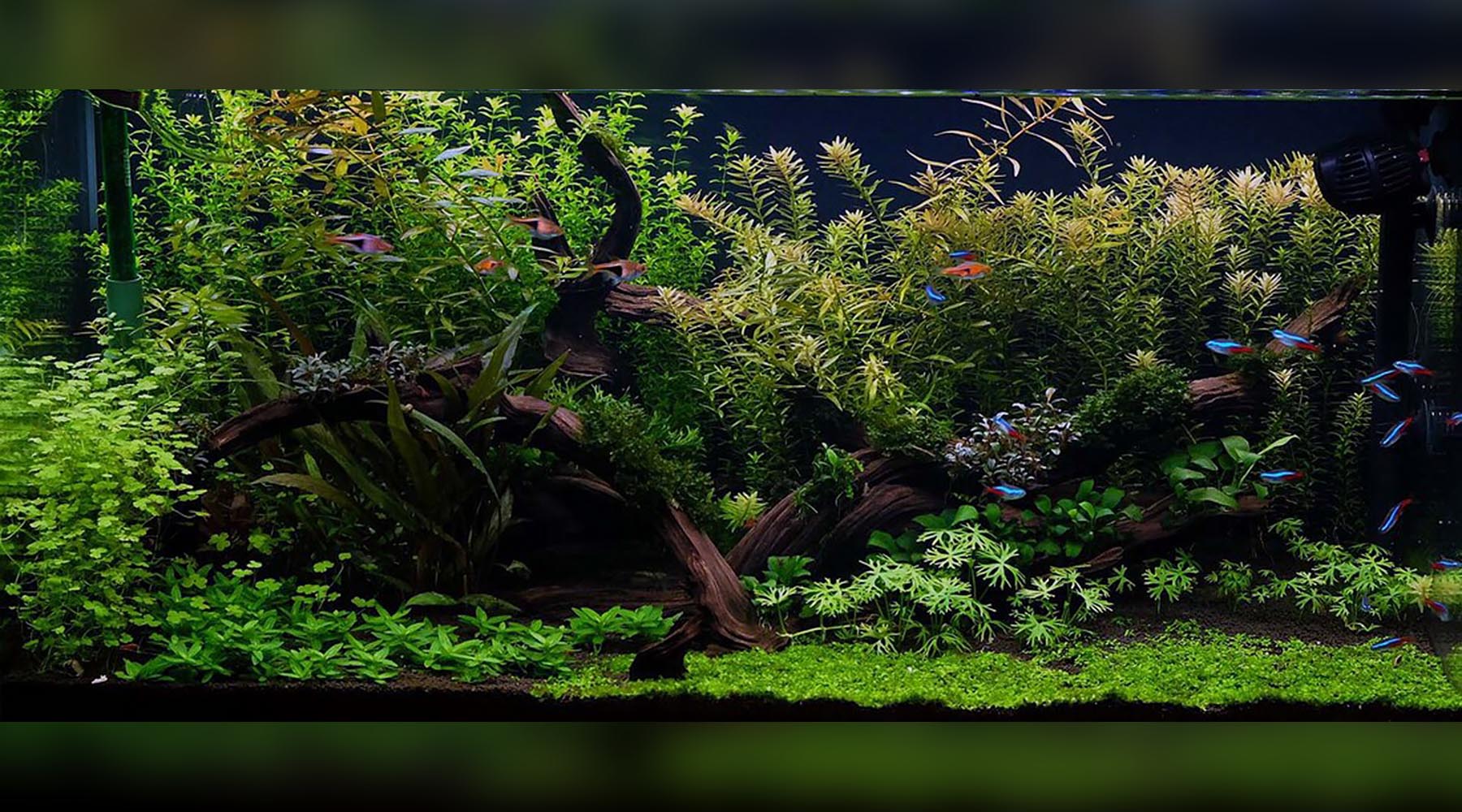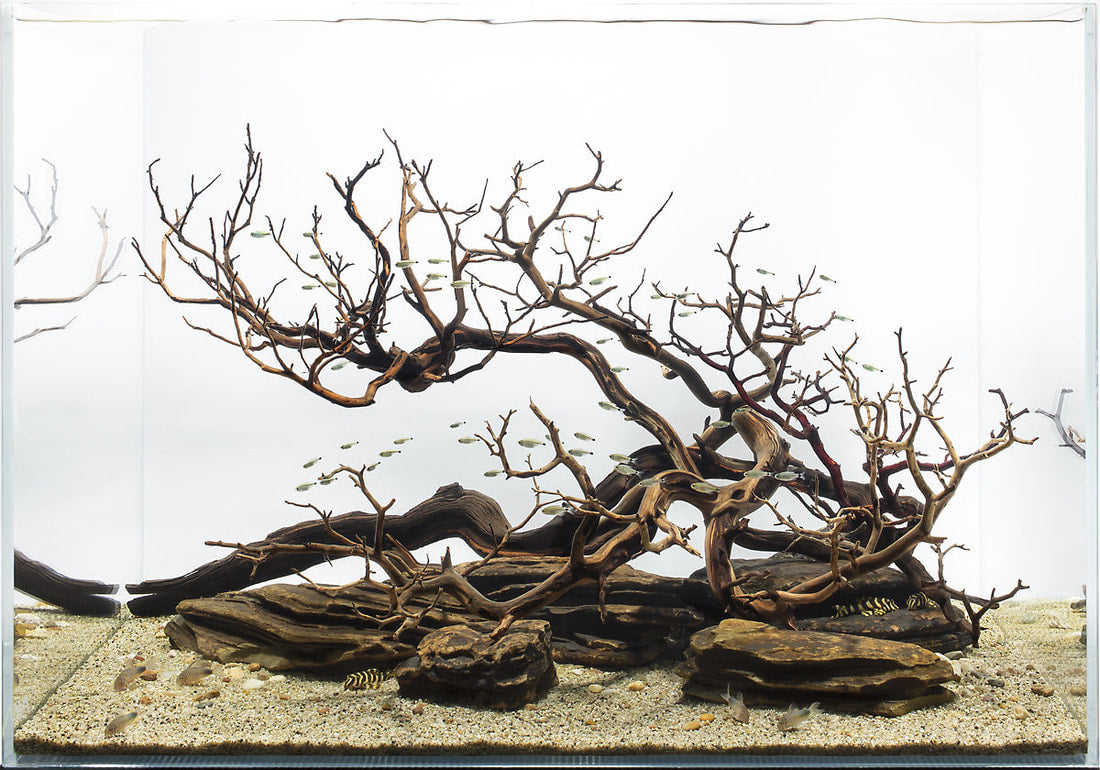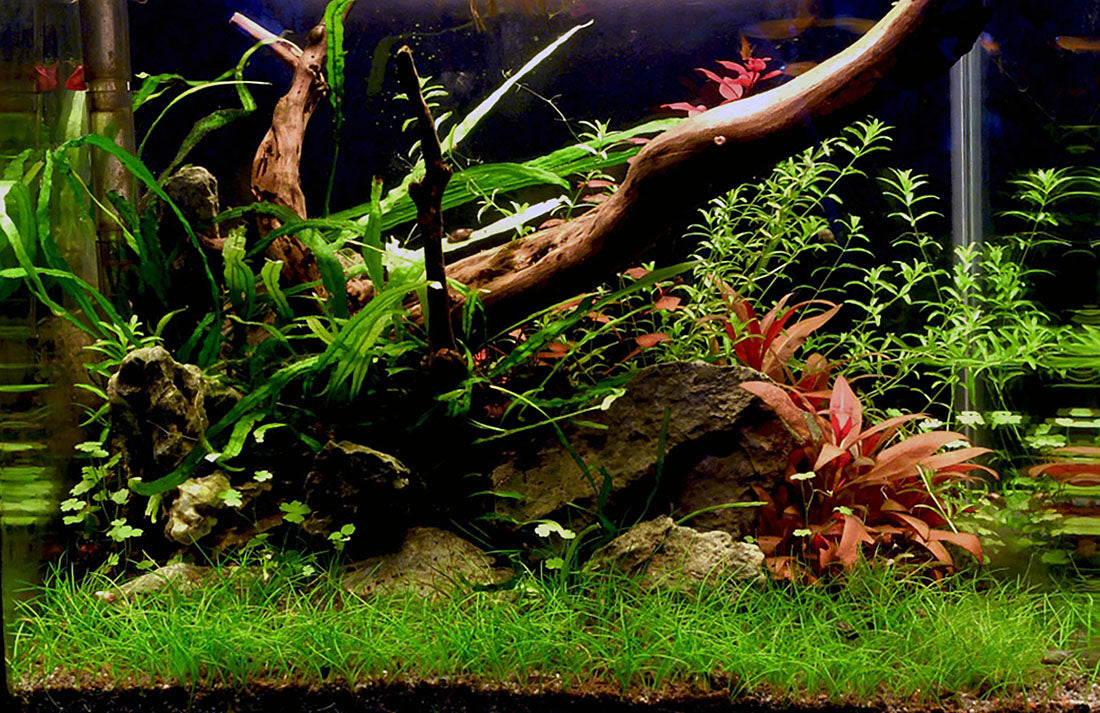Your Cart is Empty
Shop
We are a brand born of an obsession with performance, a belief in good science, and a knack for invention.
Read our story.
We are a brand born of an obsession with performance, a belief in good science, and a knack for invention.
Read our story.

Good Science
We define it as a combination of discerning research and real world results.
We define it as a combination of discerning research and real world results.

How to grow lush planted tanks without CO2 injection?
July 13, 2022 4 min read

The term 'low tech' has nothing to do with actual technology; it just refers to planted aquariums that run without injected Carbon dioxide (CO2) - this is to do with historical convention, when CO2 injection equipment was deemed high tech in the past.
Nonetheless, many plants can grow well without injected CO2 and having a thriving planted aquarium without CO2 injection is definitely achievable by most aquarists. This approach requires far less equipment and technical knowledge than CO2 injected tanks; many fish-only setups can easily be converted to having thriving plants given a few smart tweaks. The plants provide a great environment for fish by filtering the water and providing a natural environment.
Below: a lushly planted low tech tank by John Chang with a mix of easier and slightly harder plant species. Good understanding of what makes a low tech tank work well allows us to have lush, healthy tanks without requiring CO2 injection.

Six steps to an amazing 'low-tech' tank
Step 1: Choose these plants
Choose a plant selection that works with low CO2 conditions. This include plants such as Java fern, Anubias species, Water wisteria (Hygrophila difformis), Dwarf saggitaria (Sagittaria subulata), Vallisneria species, Ludwigia Repens, Java moss, Marsilea species, Rotala rotundifolia, Pearlweed ( Hemianthus micranthemoides), Sword plants, Red/green lotuses (Nypmhaea Zenkeri), Water sprite (Ceratopteris thalictroides).

A low tech planted aquarium by George Farmer from the UK. Check out his instagram and youtube channel. This tank demonstrates great choices for a low tech tank. Cryptocorynes are used on the substrate and narrow leaf Java fern are used on the hardscape. The red plant on the top left is limnophila aromatica. This tank also shows how having substantial hardscape (compare the size of the wood to George, standing at the side) forms the back bone of the aquascape.
For a guide to the best low tech plants, click here.
Step 2: Focus on Hardscape
Choose 'easy' plants, but implement complexity through hardscape work. This approach delivers much better results than being overly ambitious with demanding plants.

This hardscape-only tank on the by ADG group (visit them to get your hardscape materials) shows that hardscape alone can create stunning aquascapes.
Step 3: Use Soil
Use a soil based planted aquarium substrate. Soil based low tech planted aquariums consistently out-perform those that use inert (sand/gravel) substrates. They provide a long term store of nutrients for plants. Organic decomposition of soil releases carbon that aids growth.
Many plants root better in soil and it encourages bacteria colonisation, which has a stabilising impact on the tank environment. It also offers much better success rates for growing plants that otherwise require CO2 injection to grow well - this includes plants such as Monte carlo, staurogyne repens & alternanthera reineckii.
Commercial pellet aquasoils are much less messy to handle compared to using raw soils, and deliver more predictable results due to the consistency of the product.

A 1 gallon low tech vase, using a mix of raw soil with an aquasoil cap. The pelleted commercial aquasoil keeps the fine particles of the raw soil down and is easy to plant in.
To learn more about substrate, click here.
Step 4: Plant densely at the start
Planting densely at the start prevents algae from getting a foot hold. Plants have a stabilising effect on the eco-system of the tank and help up-take waste products such as ammonia; and absorb heavy metals.
Tank space should be at least 50% planted at the start. Having a sparsely planted tank is an invitation for algae to spawn and occupy the space. Most tanks reach stability once plant mass dominates 70%+ of the available space. A fully planted tank is the best defence against algae.

This is a mini 3 gallon low tech tank using raw soil as planted aquarium substrate base. Tank is virtually algae free as healthy plants out-compete algae.
Step 5: go for shallower tanks
Shallow tanks are much easier to manage. They have inherently better gaseous exchange and you will have easier lighting options - its much easier to light a shallow tank than a deep one. This makes a bigger impact than most people realise. Low tech tanks benefit tremendously in this aspect. A wide shallow tank such as this one by Tom barr makes it easy for aquatic plants to grow above the water surface.

To learn more about tanks for aquascaping, click here.
Step 6: Doze in small but regular amounts
Low tech tanks also do far better with regular fertilisation. Small weekly doses of fertiliser is sufficient."No fert, no dirt" tanks are essentially a bet that your water supply contains all the essential elements for plant growth.
Livestock waste is rarely adequate for optimal plant health. No fish I know of poops out chelated iron for example. Unless you are sure your tap is rich in all the required elements, having regular doses of fertiliser impacts plant health greatly.
Dosing large amount of nutrients (EI style heavy dosing) is an invitation for trouble. A tank with low demand plants such as the one below only needs to be fertilised once or twice a week at much leaner levels. Consider a comprehensive fertiliser such as APT Complete (if you have very few or no fish) or APT Zero (if you have a moderate to large number of fish / other livestock).

This layout by Hiep Hong demonstrates good use of hardscape. This would make a terrific display tank for fish with relatively low maintenance required.
unlock your true potential
Grow anything, defeat algae, create amazing aquascapes






















